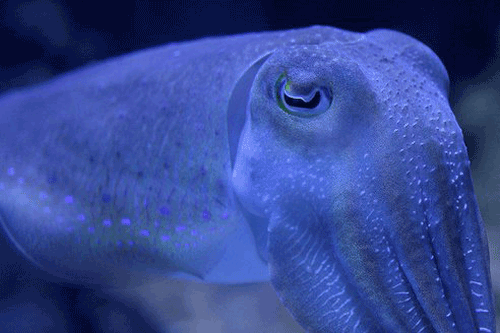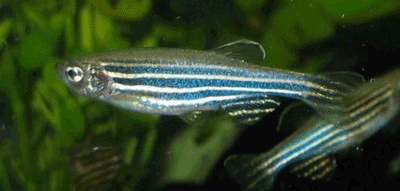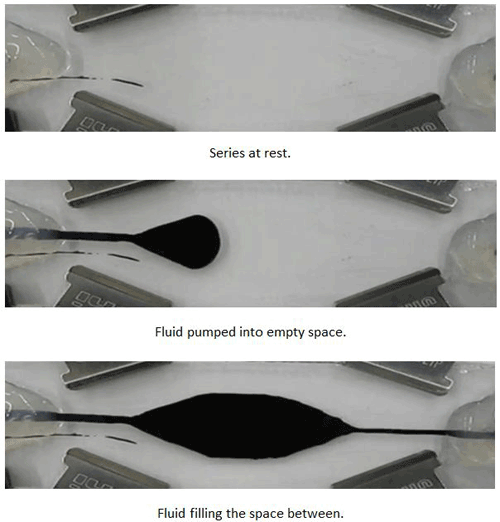Uses squid and zebrafish as inspiration for project
Researchers from the University of Bristol have created artificial material that can transform its color when voltage is applied. In their report, they cite squid and zebrafish as the source of inspiration for this project.

Researchers drew their inspiration for this project from cells found in the squid. (Via: treehugger.com)
The Bristol-team’s study falls under the developing field of soft robotics: an area that combines organic chemistry, soft materials science, and robotics. They focused on the two aforementioned sea-based organisms because they both use entirely different ways to change the color of their skin.
The report, by Dr. Jonathan Rossiter, Senior Lecturer in the Department of Engineering Mathematics, and Dr. Andrew Conn, Lecturer in the Department of Mechanical Engineering, was published in IOP Publishing’s journal Bioinspiration and Biomimetics under the title “Biomimetic chromatophores for camouflage and soft active surfaces.”
About the project
The team started things off by studying, in general, how animals change color. They saw an opportunity to reconstruct the unique camouflaging ability of specialist cells called chromatophores, which are typically found in cephalopod, reptiles, fish, and amphibians. That’s because chromatophores contain pigments of color and are responsible for the animal’s ability to camouflage themselves.
“We have taken inspiration from nature’s designs and exploited the same methods to turn our artificial muscles into striking visual effects,” said the lead author of the study, Dr. Jonathan Rossiter.
Color change in these animals is typically triggered by changes in mood, temperature, stress, or something that they see in the environment. It can also be used for camouflage, communication, or to try and attract a mate.
The way in which the chromatophores of a squid and zebrafish function, however, are entirely different from one another; this led to the team recreating the processes found in both organisms.
Mimicking the squid
A squid’s color-changing cell has a central sac that contains granules of pigment in it. The sac is surrounded by a bunch of muscles and when the cell wants to change color, the brain sends a signal to the muscles to contract. This reaction allows the central sac to expand, which spreads the pigments granules and generates the effect that the squid has changed its color.

A squid’s ability to camouflage itself by matching the color of their background is important because their predators have highly sensitive color vision. (Via: phys.org)
Rossiter, Conn, and the rest of the Bristol team used dielectric elastomers to mimic this effect. Polymer-based materials were connected to an electric circuit, and whenever a voltage was applied, the material expanded. When it was short circuited, the material returned to its original shape.
Doing this simulates the muscle contraction effect of the squid: when the polymer material contracts, a sac of dark material — in this case, carbon grease—is stretched to give the effect of changing color. When the electric impulse stops, the material relaxes, and the dark spot shrinks.

Mimicking the zebrafish
The chromatophores found in zebrafish contain a small reservoir of black pigmented fluid. When these cells are activated (typically by hormones), the fluid travels to the skin surface and spreads out, looking kind of like spilt ink. Doing this allows the natural dark spots on the surface of the zebrafish to appear bigger than they actually are.

A zebrafish has the ability to fill the empty spaces between its stripes to alter its appearance. (Via: ecofriend.com)
The way in which the team simulated this effect was by using two glass microscope slides to sandwich a silicone layer. Two flexible pumps were positioned opposite one another and connected to a central system with silicone tubes. One side pumped an opaque, white fluid, while the other was a mix of black ink and water. When one side is activated, its fluid flows into the empty space between the pumps, thus creating a superficial change of color. When the stimulus is deactivated, the liquid flows back into its reserve.

One thing to note about the Zebrafish approach is that because the process involves fluid movement, it’s much slower than the squid method. This is not necessarily a bad thing, though. According to Rossiter, it could be beneficial when it comes to thermal regulation; that is, if the fluid reservoir is near the skin of a hot person / engine, it could be systematically released to the surface of the artificial skin to transfer heat out and cool the person / engine.
“Our artificial chromatophores are both scalable and adaptable and can be made into an artificial compliant skin which can stretch and deform, yet still operate effectively,” he explains. “This means they can be used in many environments where conventional ‘hard’ technologies would be dangerous, for example at the physical interface with humans, such as smart clothing.”
Video
Check out both camouflaging techniques in action below. The first example is the squid approach and the second is the zebrafish:
Outlook
To date, the Bristol team has only built artificial chromatophores with one color — moving from light to dark and dark to light. Rossiter believes there’s no reason why they couldn’t use more colors, though, and even begin to think about creating more complicated patterns.
As far as practical use, the camouflaging muscles / material could lead to clothing that changes color to blend in with a background or transfer heat to balance body temperatures. Also, since chomatophores reflect light rather than emit it, the team’s approach could eventually lead to the creation of a new form of visual display, one that has more color and optical options than most of today’s screens and monitors.
Paper
Want to learn more? Check out the free-to-download article, “Biomimetic chromatophores for camouflage and soft active surfaces”, as featured in IOP Publishing’s journal Bioinspiration and Biomimetics. ■
Video via: IOP.org
Advertisement
Learn more about Electronic Products Magazine





